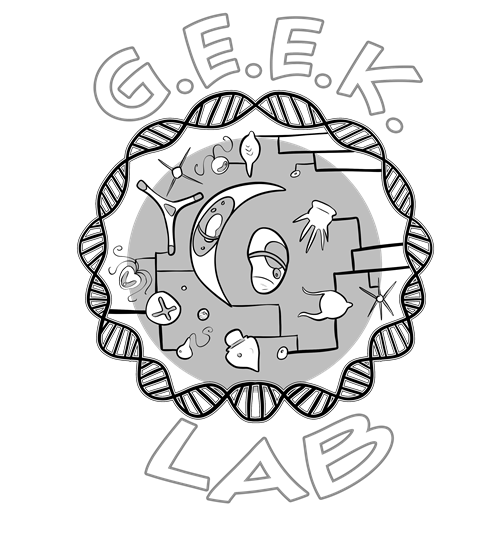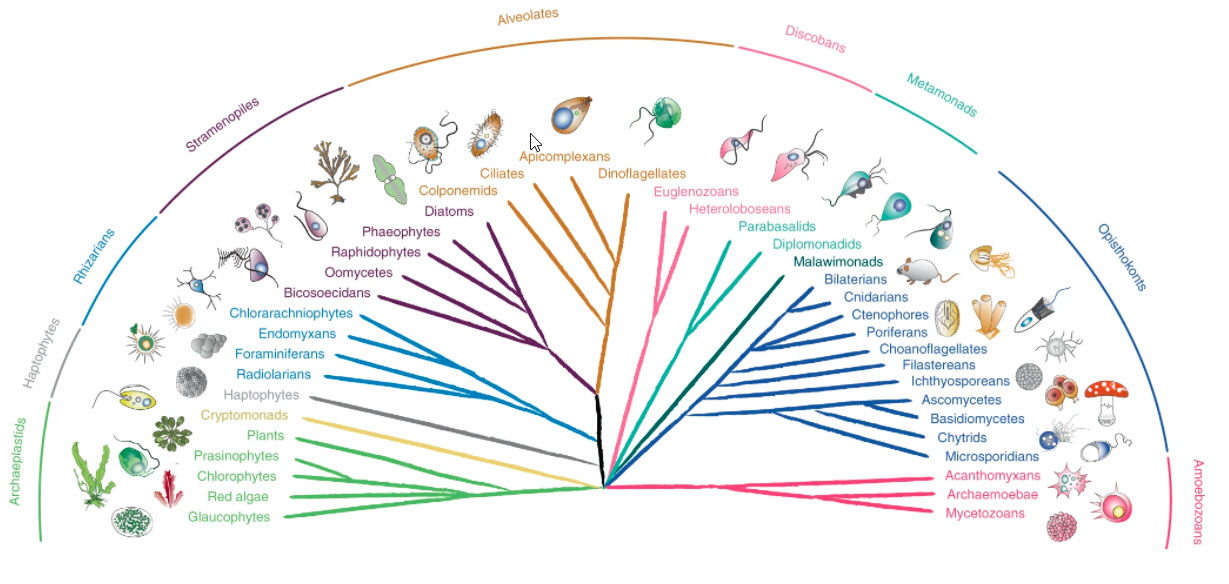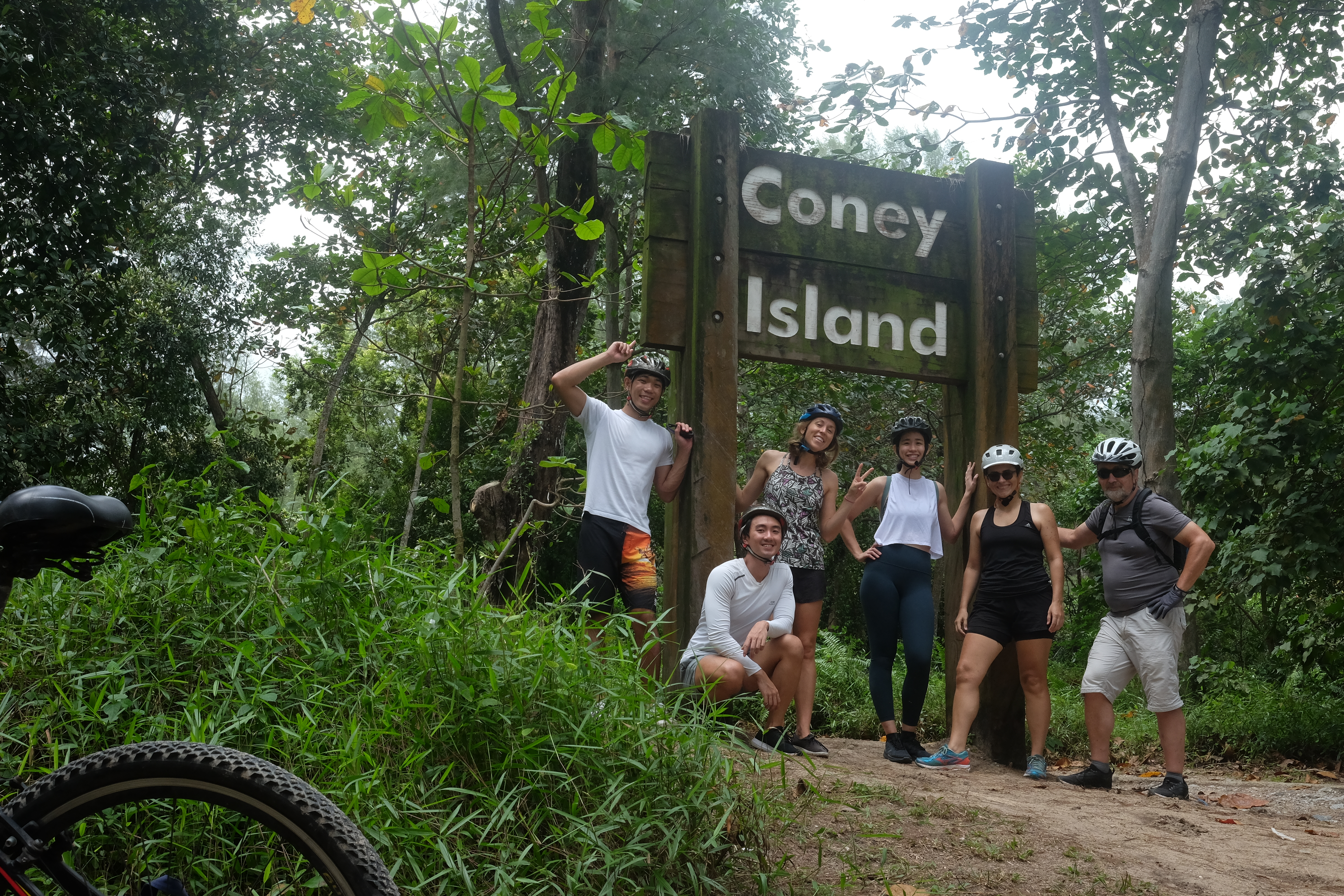We are the Genomic and Ecology of Eukaryotes research team. We use high-thoughtput sequencing methods combine with wet lab strategies (e.g. microscopy, culture isolation) to study the ecology of natural occuring microbial eukaryotes populations.
While our laboratory just recently moved to Oslo (Norway) to join the Aquatic biology and toxicology section AQUA at University of Oslo, some of the GEEK lab members continue working at our previous home in Singapore (Nanyang Technological University).

Microbial eukaryotes, what are they?
Eukaryotes are organisms which have their genetic material (DNA) involved by a membrane, therefore, eukaryotes are all living organisms other than the bacteria and archaea.
Most people will think of eukaryotes as the well-studied macroscopic lineages. However, most eukaryotes are single-celled organism and those organisms that we see in our biosphere such as animals (including us), plants or even fungi, represent the minority of the eukaryotic diversity.
Microbial eukaryotes, also called protists, is a category that includes all eukaryotes except plants, animals and fungi. They represent several ‘kingdom-equivalents’ lineages which contain an astonishing high number of species with an array of cell structures and lifestyle. Although they might look unrelated to their better-known multicellular cousins, microbial eukaryotes share both ancestry and overall cellular and genomic characteristics with all eukaryotes.

Biodiversity, why does it matter even for tiny cells?
Our biosphere can be studied from two main points of view: its unity (species) and its diversity (species communities and their structure). Describing the incredible biodiversity of our planet have allowed us to make sense of the apparent chaos of our biosphere but more important it has created a conceptual framework that we rely on to address questions to understand biologicals and ecological process that surrounds us.
A huge part of our planet biodiversity cannot be seeing direct by our eyes and therefore are microbial. Because microbes (Archaea, Bacteria and protists) drive every one of the major biogeochemical cycles (carbon, nitrogen, etc) they are central to all ecosystems on earth. Microbial communities form the foundations of every ecosystem on our planet and disrupting them can also have a huge impact on the rest of the system in ways we still not fully understand. Despite their impact on a planetary scale, we know very little about the composition of their communities, how they interact and what are the consequences to our ecosystems on biodiversity loss within microbial communities.
In our group we have been focusing on marine microbial eukaryotes which are part of plankton communities and perhaps it is the marine plankton where the importance of microbial life for our ocean become more apparent. Plankton are the collection of diverse organisms found in water that are unable to swimming against the current. Plankton communities are taxonomically and functionally diverse, with organisms covering a great range of cell sizes, morphologies, and trophic modes (autotrophs, heterotrophs, mixotrophs), and belonging to archaea, bacteria, fungi, protists (microbial eukaryotes) and metazoans (multicellular eukaryotes). In addition, plankton communities are extremely dynamic, with high growth and mortality rates. Eukaryotic marine phytoplankton, small photosynthetic cells suspended in the upper layer of the oceans, are significant contributors to major global processes such as carbon fixation and CO2 sequestration thereby sustaining the life of most other aquatic organisms.
Microbial Eukaryotes are integral part of marine ecosystems
Our ocean is critical in processes that have global ecological (e.g. controlling our planet temperature by actively removing CO2 from our atmosphere) and socioeconomic importance (e.g. fish is the primary source of protein for a billion people worldwide). Eukaryotic microbes can be found in all sorts of marine habitats: water columns from the photic surface to the dark ocean, sediments in the whole bathymetric range, hydrothermal vents, and other marine organisms as symbionts (e.g. corals and other protists) or parasites.
The study of taxonomic diversity and structure of biological communities is a cornerstone of ecology. The structural complexity and dynamic nature of plankton communities has historically precluded an accurate and comprehensive assessment of community structure and species diversity at temporal and spatial scales until recently. Currently, the advent of high-throughput sequencing (HTS) techniques combined with improved taxonomically-annotated reference sequence databases allows rapid and cost-effective assessment of the composition of plankton communities at a global level. Molecular approaches have highlighted a massive unknown diversity among marine planktonic microbial eukaryotes, including entire lineages without any cultured representatives, for which only environmental sequences are available.
The geek group aim to advance our knowledge on planktonic microbial eukaryotes community structure and ecosystem function by applying HTS techniques. We also dedicate our efforts to classical cultivation and isolation methods where we aim to stablish laboratory strains that can be used to refine our database by describing new species but also to improve our knowledge of these fascinating microbial cousin of us. As Theodosius Dobzhansky (a giant of evolution biology) wrote, nothing makes sense in biology except in the light of evolution, sub specie evolulionis. If the living world has not arisen from common ancestors by means of an evolutionary process, then the fundamental unity of living things is a hoax and their diversity is a joke.
Our values
The Geek team doesn’t tolerate any form of discrimination, racist or sexist or arrogance towards any member of our community in public or in private. We all strongly believe that a productive environment start by making the others feeling welcome, that our mental and physical health are our priorities…not papers…not grants and that science is the coolest ever tool we invented to understand our world and ourselves! Our doors and channels are open to those who share our values.
